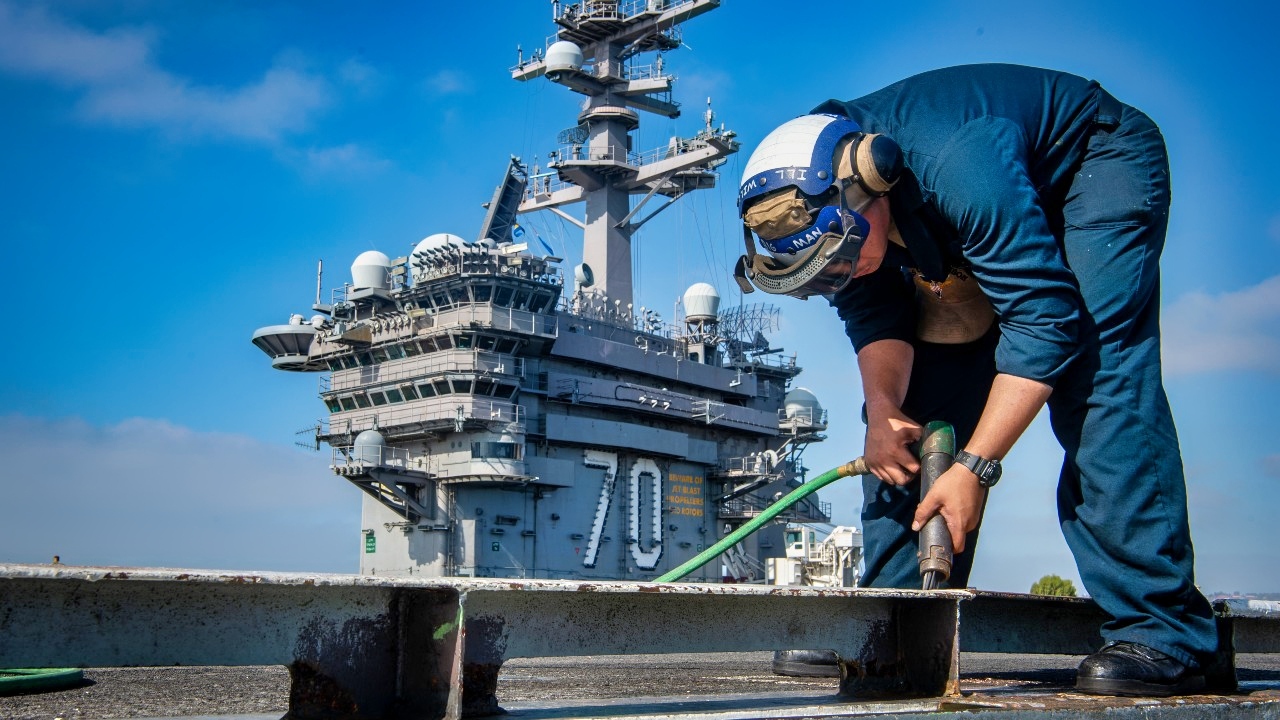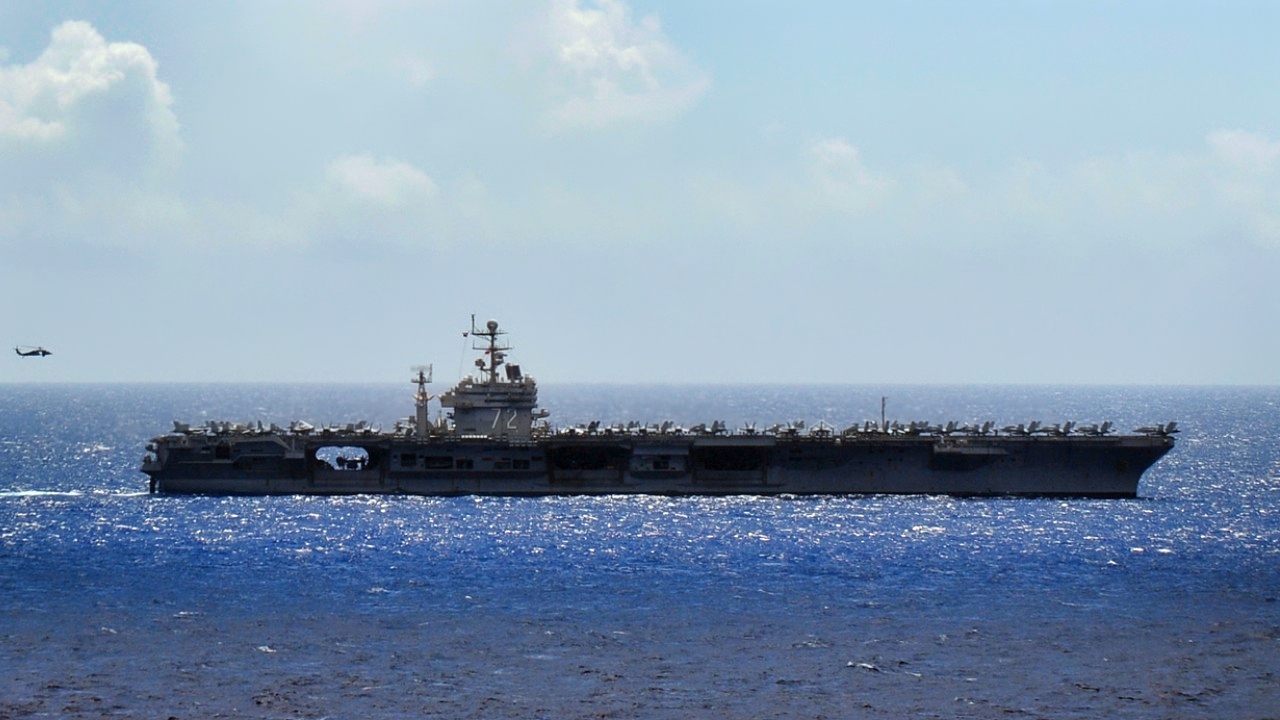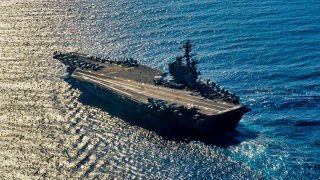Why the U.S. Navy Needs More Submarines, Not Supercarriers
It is painfully clear to me that the next revolution in the U.S. Navy will not happen unless Congress finally acts and frees a Navy held in a stranglehold for decades by the naval aviation community and their enablers in government.
Summary and Key Points: The dominance of naval aviation in the U.S. Navy has persisted for decades, sidelining the contributions of submarines and surface fleets.

-Despite key figures like Admirals Arleigh Burke and Elmo Zumwalt opposing this aviation stranglehold, Congress remains enamored with aircraft carriers.
-Admiral Zumwalt, a destroyer officer, strategically introduced Tomahawk missiles, allowing surface warships and submarines to project power independently. As tensions rise globally, the U.S. Navy should focus on expanding its submarine fleet, particularly cost-effective Air-Independent-Propulsion (AIP) submarines.
-This shift would modernize the Navy and reduce overreliance on aircraft carriers. Congressional action is crucial for this transformation.
The Quiet Struggle to Modernize the U.S. Navy’s Fleet: A Call for Change
For decades, the U.S. Navy hierarchy was dominated by naval aviators and nuclear submariners, and even in the 1990s, with the Chief of Naval Operations (CNO) Admiral Mike Boorda serving as the first Surface Warfare Officer to hold the post in decades, nothing could touch the primacy of the supercarrier and its community. Another CNO, the nuclear submariner Admiral Frank B. Kelso was known to be a staunch supporter of big aircraft carriers, and once told me that without them, the U.S. Navy was nothing but “a big coastal force.”
Congress loves big carriers as well, which makes sense as most are mainly interested in the jobs delivered to constituents to build, staff, maintain, supply, and equip these behemoths and their huge crews. Thanks to Navy propaganda, and aviator admirals in the 1950s and 1960s, many Americans have accepted the myth that naval aviation was completely and solely responsible for the defeat of Japan.
Naval aviators don’t want people to know very much about the contributions of the other communities in the U.S. Navy, like submarines, and they specifically don’t want to fully acknowledge the enormous victories won by the Soviets in the war, or the Royal Navy and Royal Canadian Navy (RCN) in the pivotal Battle of the Atlantic. No, you’re better off not knowing too much about those “trivial” contributions.
For these reasons, I would like to share something that former CNO Admiral Arleigh Burke imparted to a Canadian admiral back in the 1950s. Burke, a destroyer man, was no fan of naval aviation’s attempts, largely successful, to take over the U.S. Navy. He told Rear-Admiral Herbert Rayner, RCN, that he wanted to save the Canadians from something terrible that was happening to his own Navy. He said: “Do not let your aviation expand to the point where they will have a stranglehold on your navy as they have done here in the U.S. Navy.” (p. 153).
Luckily for Admiral Rayner, he would not have to worry for long, for he later went on to become the RCN’s Chief of Naval Staff, and the days of Canadian aircraft carriers came to an end in 1970 because of budget cuts. It’s also interesting to note that, unlike the U.S. Navy, in Canada, some captains of aircraft carriers were not naval aviators at all, and their record in NATO exercises proves that some of the alliance’s most effective carriers were run by destroyer men.
Admiral Zumwalt, another destroyer man, complained about the dominance of naval aviation during his tenure as CNO during the early 1970s and once told me that he had to use special strategies to get the Tomahawk cruise missile into the hands of the surface navy. During its development, Zumwalt kept Tomahawk’s progress very low key and used back channels to make it immune to cancelation by the naval aviators when he left office in 1974. Luckily this strategy worked, and Tomahawk went into service. Now, surface warships and submarines can project power ashore without being dependent on supercarriers, something that is not in the interests of the naval aviation community. At this point, I should say the U.S. Navy needs more black shoe admirals like Zumwalt, especially these days.
When the Naval War College published my MA thesis on bureaucratic politics in the U.S. Navy, I thought that breaking the traditional close-mindedness and parochialism of naval officers by setting up tours in other naval communities would help put an end to the dominance of naval aviation. That was then, and this is now, and that is not going to work unless Congress works up the courage to order the Navy to change course and find new ships or submarines that can take over for the supercarriers that still dominate the whole organization.

In a previous article, I argued that submarines are the natural successors to aircraft carriers, and there are already boats in service equipped with long-range cruise missiles, but this is not enough for the world we live in now. If anything, the U.S. Navy needs more submarines, especially inexpensive ones with Air-Independent-Propulsion (AIP) to assume a greater role in national defense. For all the U.S. Navy disinformation to convince Congress and the American public that its carriers are the most difficult target to destroy, they need to think about existing alternatives that REALLY are hard to detect, localize, and destroy, and these are the AIP submarines that currently serve in several allied navies. It is painfully clear to me that the next revolution in the U.S. Navy will not happen unless Congress finally acts and frees a Navy held in a stranglehold for decades by the naval aviation community and their enablers in government.
About the Author
Roger Thompson is a Fellow of the Inter-University Seminar on Armed Forces and Society, a Research Fellow at Dalhousie University’s Centre for the Study of Security and Development, the author of Lessons Not Learned: The US Navy’s Status Quo Culture, and a former researcher at Canada’s National Defence Headquarters.
This article was first published by RealClearDefense.


